|
Your search criteria found 582 images Target is Jupiter |
| My List |
Addition Date |
Target
|
Mission | Instrument | Size |

|
1996-09-13 | Earth |
Voyager |
VG ISS - Narrow Angle |
620x500x3 |
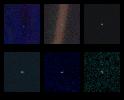
|
|||||

|
2003-05-22 | Earth |
Mars Global Surveyor (MGS) |
Mars Orbiter Camera (MOC) |
1068x3151x3 |
|
|
|||||

|
2007-12-13 | Europa | 6060x3000x3 | ||

|
|||||

|
2007-12-13 | Europa | 637x361x3 | ||

|
|||||

|
1997-01-09 | Io |
Voyager |
VG ISS - Narrow Angle |
680x500x1 |

|
|||||

|
1999-05-21 | Io |
Hubble Space Telescope |
WFPC2 |
3000x1930x3 |
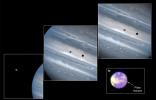
|
|||||

|
1998-07-02 | Io |
Galileo |
Solid-State Imaging |
581x900x3 |

|
|||||

|
1999-05-08 | J Rings |
Voyager |
1586x1239x3 | |

|
|||||

|
1996-01-29 | Jupiter |
Voyager |
2000x536x3 | |

|
|||||

|
1996-02-01 | Jupiter |
Voyager |
VG ISS - Narrow Angle |
895x848x3 |

|
|||||

|
1996-01-29 | Jupiter |
Voyager |
VG Imaging Science Subsystem |
940x886x3 |

|
|||||

|
1996-01-29 | Jupiter |
Voyager |
760x876x3 | |

|
|||||

|
1996-01-29 | Jupiter |
Voyager |
Imaging Science Subsystem |
896x928x3 |

|
|||||

|
1996-01-29 | Jupiter |
Voyager |
908x880x3 | |

|
|||||

|
1996-01-29 | Jupiter |
Voyager |
908x880x3 | |
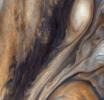
|
|||||

|
1996-08-01 | Jupiter |
Voyager |
2798x2030x3 | |

|
|||||

|
1996-09-26 | Jupiter |
Voyager |
Imaging Science Subsystem |
400x400x3 |

|
|||||

|
1996-09-26 | Jupiter |
Voyager |
1471x1238x3 | |

|
|||||

|
1996-01-29 | Jupiter |
Galileo |
Solid-State Imaging |
1600x1250x1 |

|
|||||

|
1996-01-29 | Jupiter |
Voyager |
VG ISS - Narrow Angle |
820x540x3 |
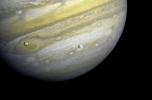
|
|||||

|
1997-01-09 | Jupiter |
Voyager |
VG ISS - Wide Angle |
800x800x1 |

|
|||||

|
1996-03-13 | Jupiter |
Voyager |
VG ISS - Narrow Angle |
1000x1000x3 |

|
|||||

|
1997-09-07 | Jupiter |
Galileo |
Solid-State Imaging |
1024x2048x3 |

|
|||||

|
1998-06-04 | Jupiter |
Voyager |
840x840x3 | |

|
|||||

|
1999-03-06 | Jupiter |
Voyager |
VG ISS - Narrow Angle |
1000x1000x3 |

|
|||||

|
1999-03-06 | Jupiter |
Voyager |
VG ISS - Narrow Angle |
916x783x3 |

|
|||||

|
1999-03-06 | Jupiter |
Voyager |
VG ISS - Narrow Angle |
915x894x3 |

|
|||||

|
1996-11-13 | Jupiter |
Voyager |
VG ISS - Narrow Angle |
850x575x3 |

|
|||||

|
1996-11-13 | Jupiter |
Voyager |
VG ISS - Narrow Angle |
790x900x3 |

|
|||||

|
1996-09-26 | Jupiter |
Voyager |
VG ISS - Narrow Angle |
600x600x3 |

|
|||||

|
1996-09-26 | Jupiter |
Voyager |
VG ISS - Narrow Angle |
500x500x3 |

|
|||||

|
1996-09-26 | Jupiter |
Voyager |
VG ISS - Narrow Angle |
846x800x3 |

|
|||||

|
1996-09-26 | Jupiter |
Voyager |
VG ISS - Narrow Angle |
607x496x3 |

|
|||||

|
1997-09-07 | Jupiter |
Galileo |
Solid-State Imaging |
1400x900x1 |

|
|||||

|
1997-09-07 | Jupiter |
Galileo |
Solid-State Imaging |
2100x1200x3 |

|
|||||

|
1997-09-07 | Jupiter |
Galileo |
Solid-State Imaging |
1546x1127x1 |

|
|||||

|
1998-03-26 | Jupiter |
Galileo |
Near Infrared Mapping Spectrometer |
233x506x3 |
|
|
|||||

|
1997-09-08 | Jupiter |
Galileo |
Solid-State Imaging |
700x800x3 |

|
|||||

|
1997-12-18 | Jupiter |
Galileo |
Solid-State Imaging |
820x1440x3 |

|
|||||

|
1997-12-18 | Jupiter |
Galileo |
Solid-State Imaging |
625x685x3 |

|
|||||

|
1997-12-18 | Jupiter |
Galileo |
Solid-State Imaging |
758x1028x1 |

|
|||||

|
1997-12-18 | Jupiter |
Galileo |
Solid-State Imaging |
800x800x3 |

|
|||||

|
1998-03-26 | Jupiter |
Galileo |
Near Infrared Mapping Spectrometer |
1000x800x3 |

|
|||||

|
1997-11-18 | Jupiter |
Galileo |
Solid-State Imaging |
1053x1491x3 |

|
|||||

|
1998-03-06 | Jupiter |
Galileo |
Solid-State Imaging |
1300x1000x3 |

|
|||||

|
1997-09-23 | Jupiter |
Galileo |
Solid-State Imaging |
712x715x3 |

|
|||||

|
1998-03-06 | Jupiter |
Galileo |
Solid-State Imaging |
1300x1200x1 |

|
|||||

|
1997-09-23 | Jupiter |
Galileo |
Solid-State Imaging |
614x900x1 |

|
|||||

|
1998-03-26 | Jupiter |
Galileo |
Solid-State Imaging |
1700x1700x3 |

|
|||||

|
1998-03-26 | Jupiter |
Galileo |
Solid-State Imaging |
903x787x3 |
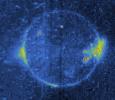
|
|||||

|
1997-09-07 | Jupiter |
Galileo |
Solid-State Imaging |
2000x1431x3 |

|
|||||

|
1997-09-07 | Jupiter |
Galileo |
Solid-State Imaging |
1400x800x1 |

|
|||||

|
1997-09-07 | Jupiter |
Galileo |
Solid-State Imaging |
1000x1400x1 |

|
|||||

|
1997-09-07 | Jupiter |
Galileo |
Solid-State Imaging |
2800x1600x1 |

|
|||||

|
1997-09-07 | Jupiter |
Galileo |
Solid-State Imaging |
513x701x1 |

|
|||||

|
1997-09-07 | Jupiter |
Galileo |
Solid-State Imaging |
550x750x1 |

|
|||||

|
1997-09-23 | Jupiter |
Galileo |
Photopolarimeter Subsystem |
807x700x3 |

|
|||||

|
1997-09-24 | Jupiter |
Galileo |
Photopolarimeter Subsystem |
585x376x3 |
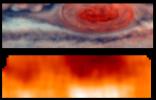
|
|||||

|
1997-09-29 | Jupiter |
Galileo |
Photopolarimeter Subsystem |
875x605x3 |
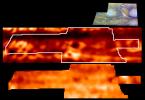
|
|||||

|
1999-09-27 | Jupiter |
Galileo |
Solid-State Imaging |
1200x700x1 |

|
|||||

|
1998-03-26 | Jupiter |
Galileo |
Solid-State Imaging |
1400x900x1 |

|
|||||

|
1998-03-26 | Jupiter |
Galileo |
Solid-State Imaging |
1200x700x1 |

|
|||||

|
1998-03-26 | Jupiter |
Galileo |
Solid-State Imaging |
4000x2500x1 |

|
|||||

|
1998-03-26 | Jupiter |
Galileo |
Solid-State Imaging |
414x800x1 |
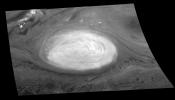
|
|||||

|
1998-03-26 | Jupiter |
Galileo |
Near Infrared Mapping Spectrometer |
1300x900x3 |

|
|||||

|
1998-03-26 | Jupiter |
Galileo |
Near Infrared Mapping Spectrometer |
900x800x3 |

|
|||||

|
1998-03-26 | Jupiter |
Galileo |
Solid-State Imaging |
970x844x1 |

|
|||||

|
1998-03-26 | Jupiter |
Galileo |
Near Infrared Mapping Spectrometer |
1000x800x3 |

|
|||||

|
1998-03-26 | Jupiter |
Galileo |
Near Infrared Mapping Spectrometer |
700x900x1 |

|
|||||

|
1998-03-26 | Jupiter |
Galileo |
Solid-State Imaging |
1400x800x3 |

|
|||||

|
1998-03-26 | Jupiter |
Galileo |
Solid-State Imaging |
1400x800x3 |

|
|||||

|
1998-03-26 | Jupiter |
Galileo |
Solid-State Imaging |
1700x800x3 |

|
|||||

|
1998-03-26 | Jupiter |
Galileo |
Solid-State Imaging |
1700x800x3 |
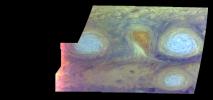
|
|||||

|
1998-03-26 | Jupiter |
Galileo |
Solid-State Imaging |
1900x1000x1 |

|
|||||

|
1998-03-26 | Jupiter |
Galileo |
Solid-State Imaging |
1700x800x1 |
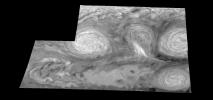
|
|||||

|
1998-03-26 | Jupiter |
Galileo |
Solid-State Imaging |
1700x800x1 |

|
|||||

|
1998-03-26 | Jupiter |
Galileo |
Solid-State Imaging |
1400x800x1 |

|
|||||

|
1998-03-26 | Jupiter |
Galileo |
Solid-State Imaging |
1400x800x1 |

|
|||||

|
1998-03-26 | Jupiter |
Galileo |
Solid-State Imaging |
1700x800x1 |

|
|||||

|
1998-03-26 | Jupiter |
Galileo |
Solid-State Imaging |
1700x800x1 |

|
|||||

|
1998-03-26 | Jupiter |
Galileo |
Solid-State Imaging |
1400x800x1 |

|
|||||

|
1998-03-26 | Jupiter |
Galileo |
Solid-State Imaging |
1400x800x1 |

|
|||||

|
1998-03-26 | Jupiter |
Galileo |
Solid-State Imaging |
1275x800x1 |

|
|||||

|
1998-03-26 | Jupiter |
Galileo |
Solid-State Imaging |
1275x800x1 |

|
|||||

|
1998-03-26 | Jupiter |
Galileo |
Solid-State Imaging |
1275x800x1 |

|
|||||

|
1998-03-26 | Jupiter |
Galileo |
Solid-State Imaging |
1275x800x1 |

|
|||||

|
1998-03-26 | Jupiter |
Galileo |
Solid-State Imaging |
900x1500x1 |

|
|||||

|
1998-03-26 | Jupiter |
Galileo |
Solid-State Imaging |
900x1500x1 |

|
|||||

|
1998-03-26 | Jupiter |
Galileo |
Solid-State Imaging |
900x1500x1 |

|
|||||

|
1998-03-26 | Jupiter |
Galileo |
Solid-State Imaging |
900x1500x1 |

|
|||||

|
1998-03-26 | Jupiter |
Galileo |
Solid-State Imaging |
1200x1500x1 |

|
|||||

|
1998-03-26 | Jupiter |
Galileo |
Solid-State Imaging |
1200x1500x1 |

|
|||||

|
1998-03-26 | Jupiter |
Galileo |
Solid-State Imaging |
1200x1500x1 |

|
|||||

|
1998-03-26 | Jupiter |
Galileo |
Solid-State Imaging |
1200x1500x1 |

|
|||||

|
1998-03-26 | Jupiter |
Galileo |
Solid-State Imaging |
900x1600x1 |

|
|||||

|
1998-03-26 | Jupiter |
Galileo |
Solid-State Imaging |
900x1600x1 |

|
|||||

|
1998-03-26 | Jupiter |
Galileo |
Solid-State Imaging |
900x1600x1 |

|
|||||

|
1998-03-26 | Jupiter |
Galileo |
Solid-State Imaging |
900x1600x1 |

|
|||||

|
1998-03-26 | Jupiter |
Galileo |
Solid-State Imaging |
800x1100x1 |

|
|||||

|
1998-03-26 | Jupiter |
Galileo |
Solid-State Imaging |
900x1500x3 |

|
|||||
 |
 |
 |
 |
 |
 |

|
|
| 1-100 | 101-200 | 201-300 | 301-400 | 401-500 | 501-600 |
| Currently displaying images: 1 - 100 of 582 |